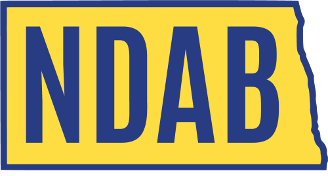In 1946, an opinion was obtained from the Attorney General of North Dakota which states that residents who are visually impaired can use a signature stamp in signing checks or documents.
Perhaps one of the most difficult and undoubtedly the most gratifying piece of legislation was completed in 1961, after ten years of hard work by the members of NDAB and many service and religious groups. This dealt with changing the location of the State School for the Blind from the small community of Bathgate in the extreme northeast corner of the state, to the city of Grand Forks on land adjacent to the campus of the University of North Dakota. The new school, first occupied in the fall of 1961, stands as a monument to all the people of the state who relentlessly fought for progress in the quality of education for students who are visually impaired.
Through intensive lobbying on the part of NDAB, a law was passed in 1967, giving a real estate tax exemption to eligible homeowners who are legally blind.
The election process for persons with sight loss was greatly improved when a bill was passed by the North Dakota Legislature, enabling persons who are blind, when voting, to have their ballots marked by a person of their choice. Previously, the ballots had to be marked by an election judge.
After the problems witnessed with the 2000 Presidential election, NDAB, together with its national affiliated organization, the American Council of the Blind, advocated for passage of the Help America Vote Act (HAVA) in 2002 to make improvements in the election process. NDAB was among the participants in the planning for the implementation of HAVA in North Dakota, which includes the installation of accessible voting machines at each polling site. The accessible voting machines allow people who cannot read print, to cast a secret, independent ballot so that they, themselves, can verify to be marked in the way they choose.
